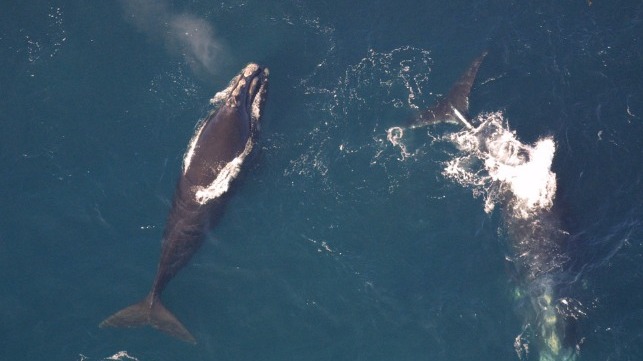BOEM Aims to Control Offshore Wind Developments' Risk to Right Whales

In advance of future offshore wind development in the New York Bight, the Bureau of Ocean Energy Management is preparing a region-wide environmental impact statement, paving the way for faster federal permitting of each individual project down the road.
BOEM auctioned off six large-scale offshore wind lease areas in the New York Bight in February 2022. The auction was held before rising inflation and interest rates forced a reset in offshore wind pricing, and it brought in more than $4.3 billion in bids for six areas off New Jersey and Long Island. If built out, the future projects would mean the installation of about 1,100 turbines, 22 offshore substations and 1,600 miles of subsea cable.
The NEPA Environmental Impact Statement (EIS) process for any given U.S. offshore wind project kicks off when the developer has finished their construction and operations plan. This means that the starting point for the lengthy EIS review comes fairly late in the game, years after the auction.
For the first time, BOEM is analyzing the programmatic environmental impact of all six leases in the auction round, all at the same time. The PEIS centers on a long list of harm-reduction measures that BOEM might require. The most important for operators are focused on marine mammals, particularly the endangered North Atlantic Right Whale.
Without mitigation, BOEM expects the development of six offshore wind farms would have a “major” impact on right whales because of the noise from pile driving, blasting of unexploded ordnance, entanglement in abandoned gear and vessel strikes. North Atlantic right whales are so endangered that each individual death has a substantial impact, and additional losses cannot be absorbed - so BOEM wants to control the risk.
The proposed measures include a 10-knot speed limit for wind vessels - far below the maximum for speedy crew-transfer vessels. The measures would require pile-driving contractors to watch carefully for nearby whales, and impose new timing and duration limits for the noise they generate. BOEM would also make wind farm operators periodically remove entangled fishing gear from the bottom where it snags on their installations, in order to reduce the risk of entanglement.
Even if adopted, BOEM acknowledges that its whale-protection measures may not guarantee the protection of right whales, since increased vessel traffic from offshore wind development will still raise the risk of a whale-vessel collision.
The proposed alternative also includes measures to offset expected impacts on the fishing industry. These include paying the fishermen for loss of income from lost access, compensating them for gear lost to new subsurface snags, and managing the layout of turbines to allow for easier fishing operations.
BOEM is accepting comments on the draft of the PEIS until February 26. It will be holding a series of virtual and in-person meetings as well so that regional stakeholders can comment in-person.
Once the regional EIS is finalized, each project will still have to go through its own EIS process individually - but a baseline framework for regional-scale impacts will already be in place.
